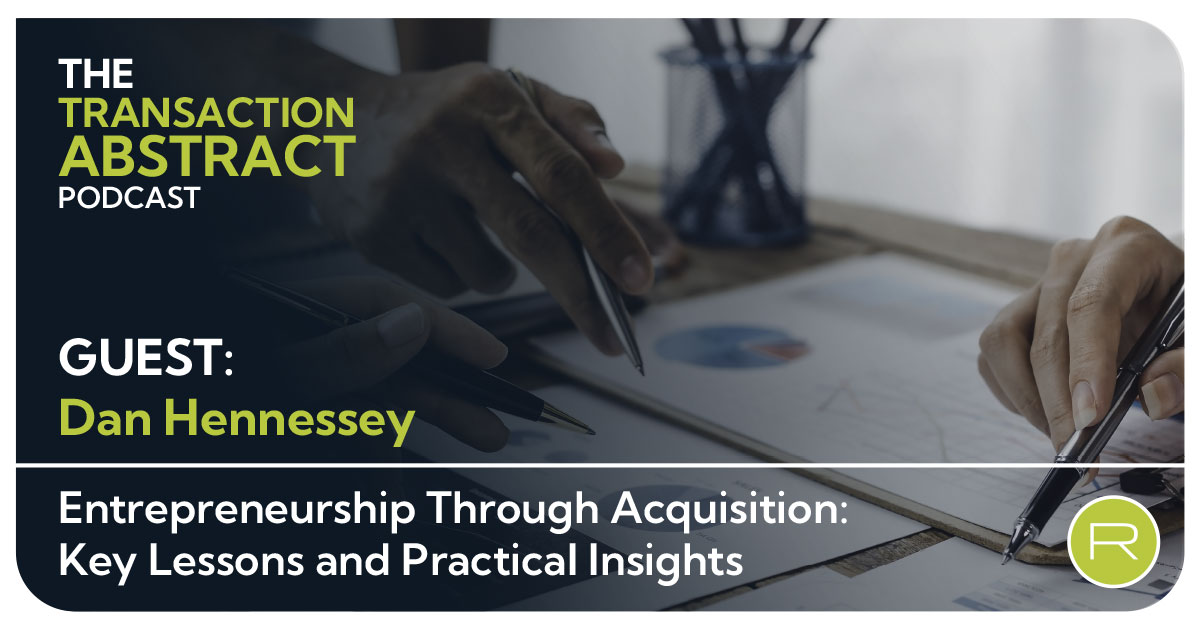Entrepreneurship Through Acquisition: Key Lessons From Dan Hennessey
In this episode of The Transaction Abstract Podcast, Joe Hellman sits down with Dan Hennessey, the newly appointed CEO of Sam Schwartz Pedestrian...
![Brand Considerations in an M&A Transaction [PODCAST]](https://www.redpathcpas.com/hubfs/Blog%20Images/brand-considerations.jpg)
You have worked hard to establish your company’s brand—your name, your reputation, and all the other things that identify your “presence” in the community and marketplace. So what happens when you decide to sell your company? Or acquire a business with its own brand? In a recent episode of The Transaction Abstract podcast, Joe Hellman discussed brand strategy and post-acquisition migrations with Lauren Tannenbaum, Senior Vice President and Group Lead at Joe Smith, a brand consultancy that works with companies across the country. Working in nearly every industry over the last two decades, Lauren says she loves helping companies be true and authentic in “finding ways to tell stories using data.”
Mergers and acquisitions bring two organizations together functionally, but how do you tell that story to the rest of the world? You have to bring together their names, identities, organizations, and cultures under one roof. How you do that will have internal and external consequences.
As a founder, you have put your heart and soul into building a company that has awareness and, therefore, brand equity as well as financial equity. Now, there has to be a balance between what you want to do with your brand in your organization and what the acquiring company wants to do.
“It’s relatively rare that one brand is immediately going to go away,” says Lauren. After all, it is part of the reason you are acquiring the company. So, you need to look at migration or integration over time. What will be the role of the brand over the next two or three years? How will the brand name evolve? There are three key questions to resolve:
Each transaction is unique and requires a thoughtful approach to what is most fruitful for the two organizations. Lauren warns, in general, it is best to focus on what will be the most effective brand strategy and not just the most efficient.
The identity decisions you make will influence your storytelling. Employees need to know who they are working for, and customers need to know who they are doing business with. In particular, developing a new brand strategy and evolving the story you are telling can be a powerful way to unite disparate employee groups under something new. It gives both groups a home within the story.
One of the biggest challenges Lauren sees is that a marketing or brand team is not often brought under the tent in an M&A scenario. Things get written into the deal structure that do not make sense from a brand and marketing perspective down the road. Instead, she suggests involving someone who knows the company’s overall marketing and brand strategy and how they are building the brand before the deal is signed.
Financial commitment is another major factor. Should you invest in transitioning a brand with strong equity that you want to retain? What will you have to invest if you do not transition the brand? Considering these questions during the acquisition process allows you to think about how you can build those costs into the cost of the deal.
Planning ahead allows for a smooth and positive brand transition. It is not going to happen overnight, more likely the transition will take a year or 18 months. Lauren strongly encourages people to think beyond the most visible elements of brand integration to what you need to do around the broader strategy of storytelling and employee engagement.

In this episode of The Transaction Abstract Podcast, Joe Hellman sits down with Dan Hennessey, the newly appointed CEO of Sam Schwartz Pedestrian...
![Common Legal Pitfalls in M&A Transactions with Kim Lowe [PODCAST]](https://www.redpathcpas.com/hubfs/Podcast-Legal-Pitfalls-Kim-Lowe.jpg)
In this episode of The Transaction Abstract Podcast, Joe Hellman sits down with Kim Lowe, Partner at Avisen Legal, to discuss the most common legal...
![Legal Considerations in Self-Funded Search Fund Transactions with Jake Parsley [PODCAST]](https://www.redpathcpas.com/hubfs/Blog%20Images/%5BTEMPLATE%5D%20RED%20Podcast-%2012-122024%20(1).png)
In this episode of The Transaction Abstract Podcast, Joe Hellman speaks with Jake Parsley, a partner at SMB Law Group specializing in search fund...